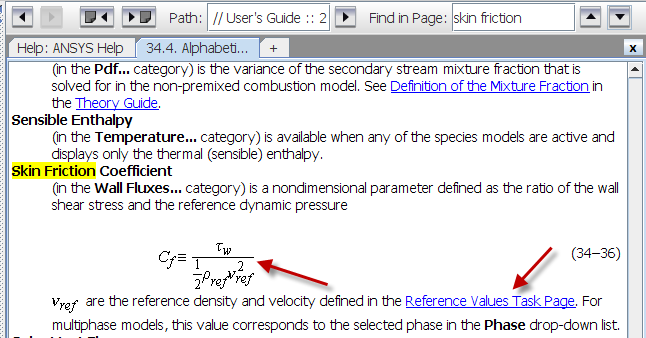...
FLUENT calculates the skin friction coefficient as follows (see section 34.4 of the FLUENT User's Guide which is accessible from the "help" button on the FLUENT interface. In ANSYS 15.0, see section 33.4 Alphabetical Listing of Field Variables and Their Definitions).
The wall shear in the numerator of this expression is calculated from the gradient of the velocity field. The "reference" density and velocity used in the denominator are specified through the reference values panel.
...
| Info | ||
|---|---|---|
| ||
Students in MAE 6510 will need to select the surface heat transfer coefficient , h, in addition to the skin friction coefficient for your HW assignment, in order to calculate the local Nusselt number. Reference values used are length and temperature. Hence, you will need to specify the appropriate reference density, velocity, length, and temperature in FLUENT before you export the skin friction coefficient and heat transfer coefficient into the post-processor. One can use the heat transfer coefficient to then calculate the local Nusselt number in post-processing. If you select to export the Surface Nusselt Number directly from Data File Quantities, you will be exporting a Nusselt Number that is calculated at one x value only (x = 1mthe reference length of 1m in our case). It is always good practice to look up how ANSYS calculates quantities like these each time you choose to export.
|
Double click on Results from the Workbench Window to launch CFD-Post.
...
 Sign-up for free online course on ANSYS simulations!
Sign-up for free online course on ANSYS simulations!
